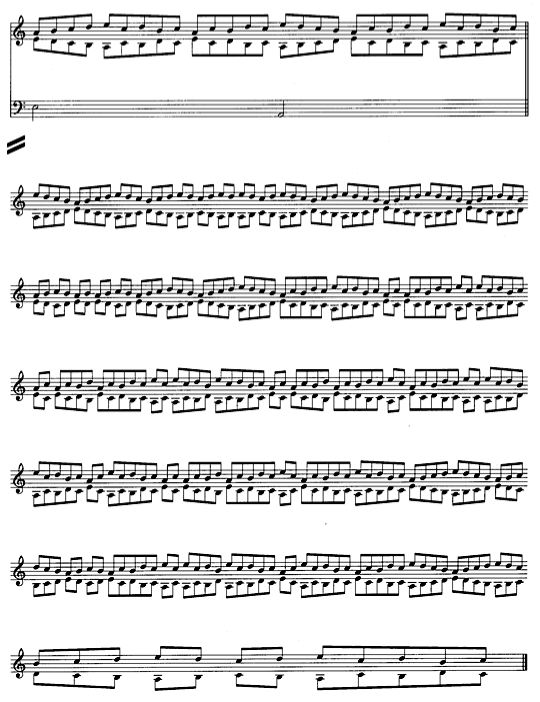|
Minimalism is music created by employing tiny changes to patterns in the music over extended lengths of time to create a hypnotic
effect on the audience.
Minimalism, introduced in the 1960s, was an extremely radical idea that, had it been introduced earlier in the 1900s or in
previous centuries, would have been immediately rejected. It also redefines the purpose of music, again to create a certain
mood or environment for the listener. This form of music does not strive to really tell a story because it isn't about tonal
resolution or melodic lines. Minimalist music is about trance-like background music to distract and hypnotize people that
need to escape from everything going on in society at the time.
Characteristics of Minimalism:
-repetitions last at least 30 minutes, mostly over an hour
-long ostinatos with systematic changes in progressions
-harmonic statis
-rhythmic equality
-additive melody: extends or slightly changes patterns, creating some melody or change in musical line
-rotation of phrases
-stacking of harmonies, rhythms, melodies to create "texture"
-isorhythmic overlap
Minimalist music was very important to the time period of the 1960s because of the changes in society and culture and
other societal movements (civil rights, relation with Soviet Union). In other countries, mainly the USSR, this style of music
was used as government propaganda in that this trance-like music was played over and over to people with words about the leader
and government to make people's subconscious minds accept everything that the government wanted them to. In America, the
music was not controlled by the government because we live in a democratic nation and don't have to deal with that; however,
composers exposed the public to this music to take their minds off of the turmoil of other facets of their lives and society.
| A minimalist composition by Phillip Glass |

|
|




